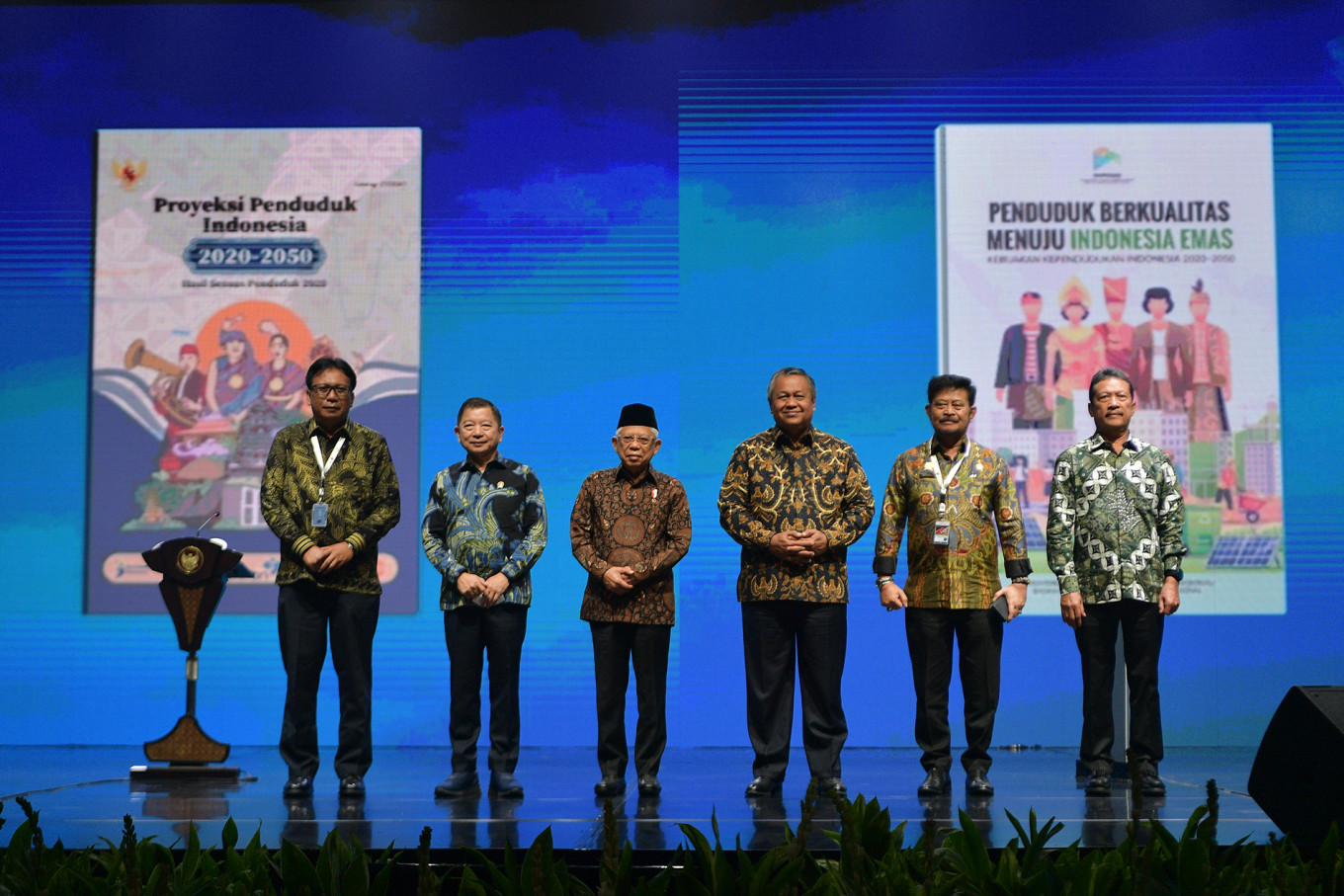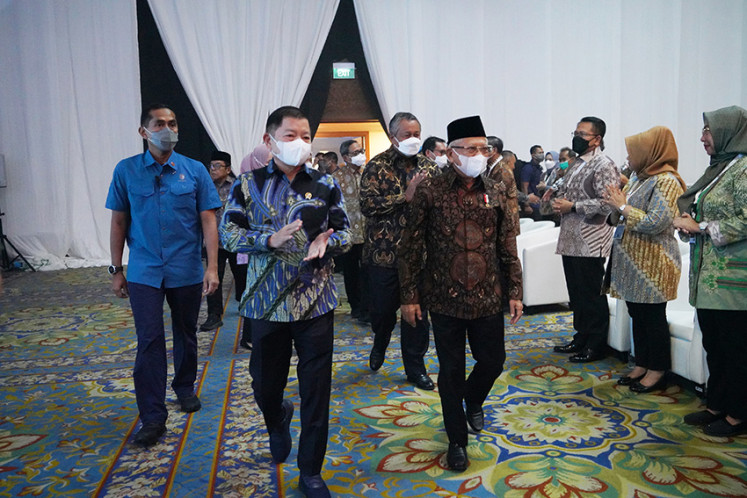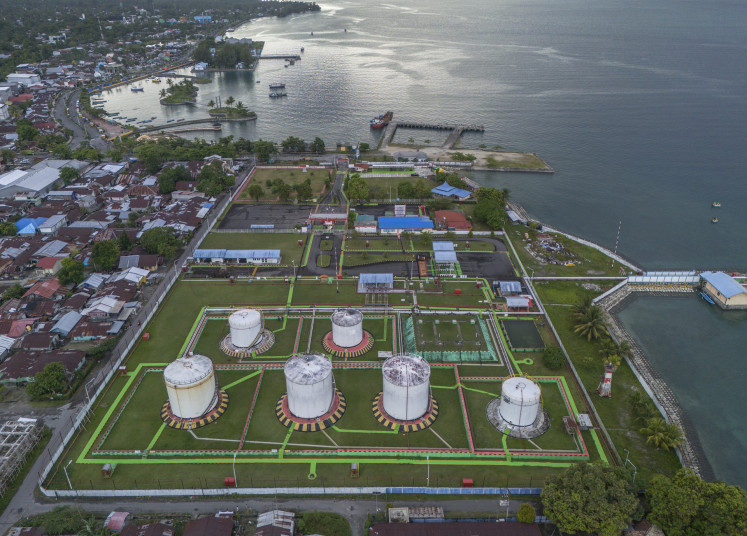Popular Reads
Top Results
Can't find what you're looking for?
View all search resultsPopular Reads
Top Results
Can't find what you're looking for?
View all search resultsBappenas unveils Indonesia’s 2020-2050 population projection
Change text size
Gift Premium Articles
to Anyone
T
he Minister for National Development Planning/Head of the National Development Planning Agency (Bappenas), Suharso Monoarfa, unveiled on May 16 the country’s projected population for 2020-2050 in a bid to anticipate related issues that could emerge in 2045, when Indonesia is expected to reach its Golden Year.
Bappenas arrived at the population projection in collaboration with Statistics Indonesia (BPS), Suharso told the National Development Planning Conference (Musrenbangnas) on the 2024 government work plan (RKP), which opened in Jakarta on May 2.
Suharso explained that the population projection referred to three policy scenarios that anticipated issues related to population growth.
The first was a “business as usual” scenario that would result in a maximum decline in total fertility rate (TFR) of 1.9 in 2045 and an infant mortality rate (IMR) of 7.85 percent.
The second was a moderate scenario that maintained a TFR of 2.0 and an IMR of 5.8 percent.
The third and final scenario was an optimistic scenario that aimed to maintain an average life expectancy (UHH) of 80, equal to that in developed countries. Meanwhile, the TFR would be maintained at 2.0 and the IMR would be 4.2 percent.
The population projection and scenarios showed that the Indonesian population was expected to reach 324 million in 2045, an increase of 54.42 million from the 2020 figure. The average population growth for 2020-2050 was 0.67 percent per annum.
“Meanwhile, the above 65 population is projected to increase from 6.16 percent to 14.61 percent in 2045,” said Suharso.
The world is currently seeing a rapid change in its population structure. This year, India is expected to become the world’s most populous country to replace China, which has experienced negative population growth since 2021.
Indonesia, which was the world’s fourth most populous country in 2020, is expected to become the world’s sixth most populous country.
“This is because population growth will start to decline by the 2030s. Nigeria and Pakistan are expected to rank fourth and fifth, respectively,” Suharso said.
. (Photo courtesy of Bappenas and BPMI/.)He then revealed the five policies for the government to implement to anticipate the demographic changes now taking place.
First, the government needs to facilitate balanced population growth. Second, the government needs to resolve the gap in human resource quality. Third, the government needs to provide support for the additional number of ageing people. Fourth, the government needs to encourage the movement of people to ensure an evenly distributed population. Finally, the government needs to maintain balanced urban and rural development.
According to Suharso, to achieve balanced development, a new-era family planning policy should be drafted to ensure that young couples were ready to build a family.
“One of the issues that we must pay attention to is whether young couples are really prepared, socially and economically, to produce quality children.
“On top of that, it is also necessary for the government to develop a care economy to ensure balance in terms of work between male and female workers by providing a proper child care system,” he said.
The government also needed stronger strategies in communication, information and family planning education to match local conditions and targeted groups.
Suharso pointed out that the projection showed that millennials and members of Generation Z, who would form the pre-ageing and ageing populations, should make preparations that included starting pension funds and maintaining a healthy lifestyle. Millennials who currently worked as civil servants should make continual improvements to policy and service patterns by keeping up-to-date with the latest developments, especially in digitalization.
Millennials and Gen Zers were expected to maintain the population’s growth by producing balanced and quality children.
“They are also expected to respect [elderly] people, because they will later belong to the ageing population also,” said Suharso.
“And they are also expected to develop policies that support the lives of [elderly] people in the future,” he added.
He said the government should also form a strategy to encourage even distribution of the population.
“This is crucial to avoid one densely populated region, which will have an adverse impact on the quality of life and the environment in that region. The government can offer incentives, such as building inclusive economic development centers, providing jobs and capital, quality social and economic facilities,” he said.
“The [Musrenbangnas], held offline, is hoped to ignite our optimism to rise up from the negative impacts of the COVID-19 pandemic to embrace inclusive and sustainable economic transformation,” he said.
The RKP aims to achieve the targets set out in the 2020-2024 National Medium-Term Development Plan (RJPMN) and to lay the foundation for the Golden Indonesia Vision 2045.
Themed “Accelerating an Inclusive and Sustainable Economic Transformation”, the RKP 2024 elaborates on maintaining seven national priorities as next year’s development focus.
The initial RKP 2024 sets its sights on several development targets including: economic growth of 5.3 percent to 5.7 percent; a poverty rate of 6.5 percent to 7.5 percent; an open unemployment rate of 5.0 percent to 5.7 percent; a Gini ratio of between 0.374 percent and 0.377 percent; a human development index of between 73.99 percent and 74.02 percent; greenhouse gas reduction of 27.27 percent; a fisher exchange rate of between 107 percent and 110 percent; and a farmer exchange rate of between 105 percent and 108 percent.
Suharso said that in 2024, the government needed to focus on delays in completing and achieving the national development targets, partly due to rural development and collaboration with non-state actors.
Meanwhile, he said efforts were continuing on meeting several national development indicators that should be highlighted in eight policy directions: first, reducing poverty and alleviating extreme poverty; second, increasing the quality of health and education services; third, revitalizing industry and strengthening applied research; fourth; building business competitiveness; fifth, pursuing low carbon development and the energy transition; sixth, accelerating the development of basic infrastructure and connectivity; seventh, developing the Nusantara capital city; and eighth, holding the 2024 general election.
Major projects in the RKP 2024 played a significant supporting role in achieving the national priorities, with 16 major projects based on the direction of the RKP 2024.
“The implementation of all major projects will be sharpened by utilizing the development output for the people, not just distributed but delivered,” he said.
The drafting of the RKP 2024 has passed several consultative stages involving various stakeholders, including the Product Consultation Forum, the Development Planning Coordination Meeting and the Provincial Development Planning Conference.
The latest stage is this month’s Musrenbangnas, which involves all government ministries and institutions, as well as regional administrations. The series of activities at the national conference are expected to produce a planning document that ensures synergy between development actors, between the central government’s agencies, and among the central and regional governments with other stakeholders.
This article was published in collaboration with Ministry of National Development Planning/National Development Planning Agency (Bappenas)












